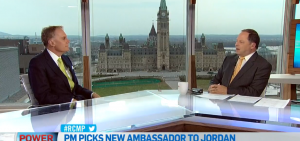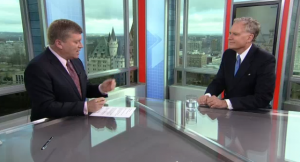It’s time for Canada to join the ‘second NAFTA’ of the Pacific
Special to The Globe and Mail Published Tuesday, May. 21 2013
During his trip to Peru and Colombia this week, Prime Minister Stephen Harper will attend the Pacific Alliance Leaders’ Summit in Cali, Colombia. Launched in April, 2011, the Alliance is a free-trade bloc made up of Chile, Colombia, Mexico, and Peru.
Last year, Canada became an observer to the Alliance. Why? Because it represents what we are trying to achieve through our Americas strategy.
More Related to this Story
- trade Canada called ‘a natural fit’ for Pacific Alliance
- Pacific Alliance Trade talks squeeze Canada’s refugee-protection system
The Americas strategy – announced in 2007 as a major foreign policy initiative of the ‘new’ Harper Government – is designed to revive and expand Canadian political and economic engagement in the Americas.
Interpreted by some as an effort to distinguish itself from previous governments’ focus on Africa, progress on the Americas strategy has been more tortoise than hare.
At the outset, attention to the Americas was diverted by the global economic mess that demanded all hands on deck. Then the government reopened the door to China, and public attention shifted to the Pacific.
At the same time there is the promise, still unrealized, of the Canada-Europe Trade Agreement. And, as always, there is the United States and the eternal quest around secure access for our goods, people and services.
All of this left little time for the rest of the Americas. There remains some skepticism about our ability to sustain relationships. It takes two to tango and our overtures were not always met with enthusiasm. There were problems, not all of our own making.
Mexico, with whom we should have the strongest partnership, was preoccupied with the existential war with the drug cartels.
Brazil, now the world’s seventh-largest economy, has global aspirations. Notwithstanding our long commercial ties, especially in resource development, we have had our differences over beef and Bombardier.
Canada recently began negotiations with Mercosur – Argentina, Brazil, Uruguay and Venezuela, but it’s complicated. Argentina doesn’t like our policy on the Falklands and we don’t like its protectionism. Cuban admission to Mercosur – the Brazillian goal – presents problems.
Still, there has been progress on the strategy.
On the democracy front, we have participated in 47 OAS electoral observation missions in 17 countries since 2009, and Canadians played a lead role in brokering the peace in Honduras. But promoting democracy is a work in progress. Even post-Chavez, populist authoritarianism continues to cast its seductive spell.
We play a growing role in security through targetted development and assistance programs aimed at strengthening policing and the judiciary. Our warships patrol the waters on both sides of the Isthmus of Panama to preserve maritime order and stem the drug trade.
In the last four years we have concluded free-trade agreements with Peru, Panama, Colombia and Honduras.
With more than 2,500 Canadian companies active in the region, our overall trade since 2007 has increased by a third. Canadian interests account for 60 per cent of the region’s international mining investment. This map visibly demonstrates the network of our development and investment initiatives.
But we need to do more if we are to realize the opportunities for our goods and services. Latin America’s middle class now numbers 50 million – it grew by 50 per cent during the past decade.
As a first step we need to look at how we market ourselves. Investment flows are mostly one direction – from Canada to the Americas. Latinos look askance at our closed telecommunications sector. Our labour costs are a comparative disincentive to investment in manufacturing, except as part of supply chain dynamics.
Secondly, we need to apply the creativity we have demonstrated in our immigration policy to our visitor visa program.
Having fixed the loopholes in our refugee policy, we should lift the visa requirement on Mexico that has cut visitors by more than a third since its imposition in 2009.
During a meeting with Mexican president-elect Enrique Pena Nieto in November, Mr. Harper said he’d like to see visa-free travel. Why not announce it in Cali? We could also establish a fast-track a Nexus-standard visa for Alliance members.
And, as a third step, let’s take a chance on the Pacific Alliance and seek full membership.
It would give Canada a “second NAFTA”, argues Latin scholar Carlo Dade, and complement the Trans-Pacific Partnership, currently into its 17th round of negotiations in Lima. With Japan’s inclusion, the TPP will cover nearly 40 per cent of global economic output and one-third of all world trade.
The Pacific Alliance is smaller but the degree of trade liberalization is more ambitious. It aims at an integrated stock exchange, labor mobility and a single window for all moving goods. In its look at the Pacific Alliance, the Economist sensed a “hard-nosed business deal, rather than the usual gassy rhetoric of Latin American summitry.”
Its member countries are four of the fastest growing economies representing one-third of the population of Latin America. Collectively it constitutes the world’s ninth biggest economy.
We have FTAs with each member. We risk losing the advantage of those agreements if we continue to sit as an observer.
Importantly, they want us. “Canada is a natural fit” said Mexico’s Foreign Affairs vice-minister Sergio Alcocer last week.
They recognize in us a like-minded country with a deep democratic tradition that is serious about liberalizing trade and investment. From our perspective, we have more pull with them than alone.
Built around western-style free markets, the rule of law and democratic politics – the essence of our America’s strategy – it’s time to move beyond observer status in the Pacific Alliance. Our place should be at the main table.
See also:
Canada not joining Pacific Alliance trade bloc yet
Andres Oppenheimer: While Pacific Alliance thrives, Mercosur withers
Pacific Alliance: the most exciting thing going on in LatAm these days
Guest post: LatAm’s Pacific Pumas, beyondbrics
Guest post: the Pacific Alliance and why it matters, beyondbrics






